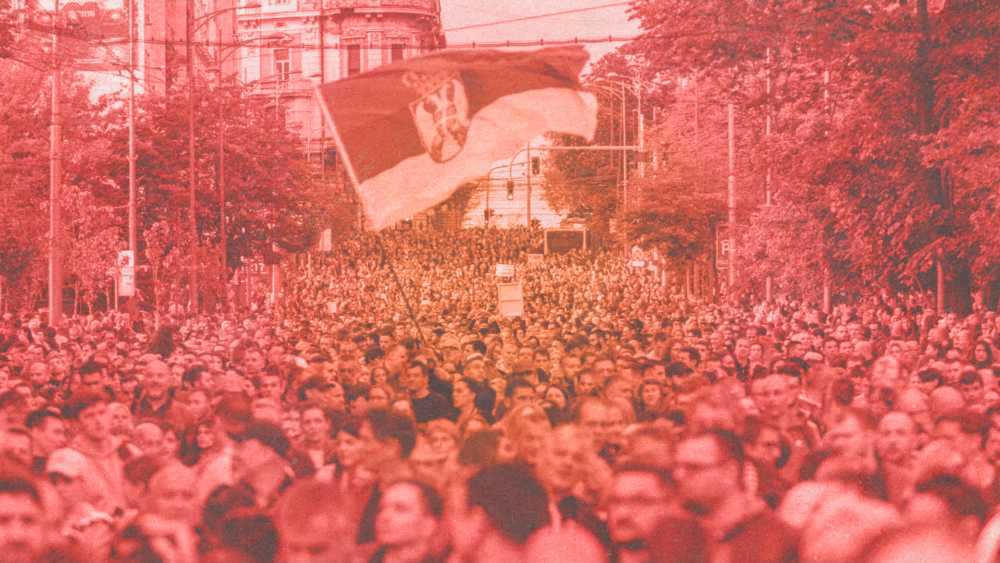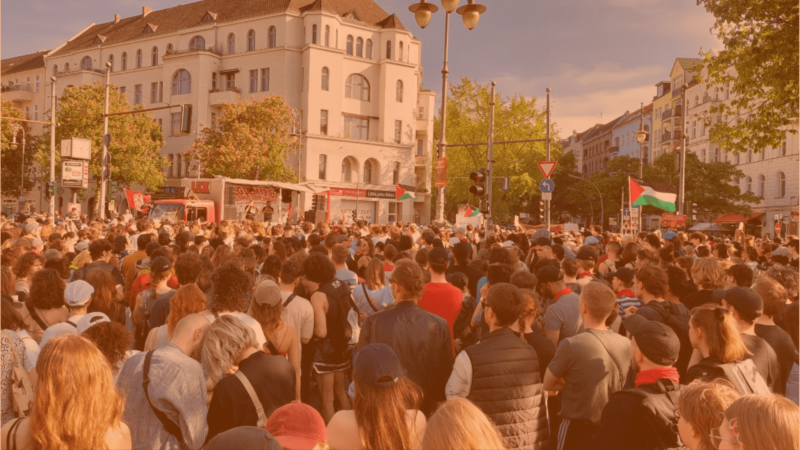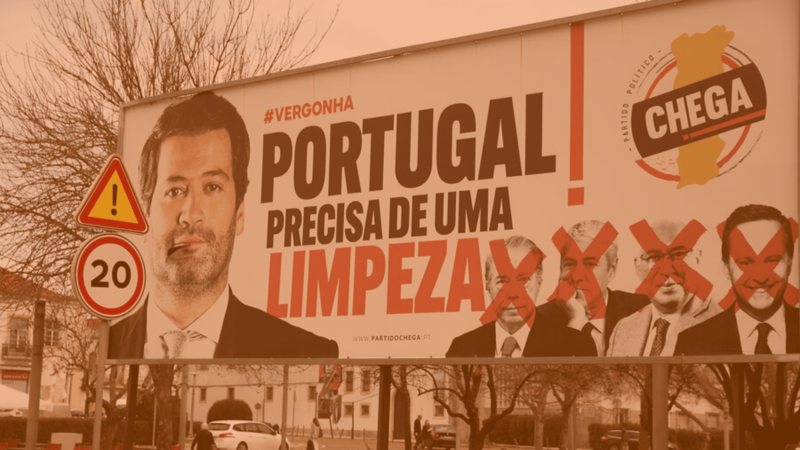The recent spurt of mass shootings has not only driven widespread protests against the Vučić government — but provoked a deeper reflection on “care, solidarity and interdependence” in the post-Yugoslav constellation
The tragedy was incomprehensible: in less than 48 hours, a 13-year-old boy shot and killed eight of his schoolmates and a security guard while also wounding a teacher and another six children (of which one died on May 15th) in an elementary school in central Belgrade; and a 21-year-old man killed eight and wounded fourteen, mostly young people in villages around the town of Mladenovac.
In Serbia, where mass shootings are extremely rare (the last one happened in 2013) and school shootings (were) non-existent, the events have caused fear, distress, grief, and a million questions about how this could have happened, who is responsible and the steps that need to be taken now.
According to a research from 2018, Serbia, next to Montenegro, has the highest rate of small firearms owned per 100 people in Europe – 39.1 – with around 800 thousand legally-owned weapons, and an unknown number of unreported weapons left over from the Yugoslav wars.
Nationalistic, chauvinistic and misogynistic sentiments pervade the public sphere, while crime figures and celebrated war criminals regularly appear on TV shows, reality programs and tabloids. Two parties in power, Vučić’s SNS and Milošević’s SPS, directly promote such figures and attitudes: two convicted war criminals are their prominent functionaries. The regime’s ties to criminal groups and its reliance on and instrumentalization of hooligans, stand out as another factor facilitating the overall normalization of violence in Serbian society.
The ruinous state of the public education system and the failure of relevant institutions to address the problem of rising violence in schools and its prevention can be seen as another contributing element. This can also be said about the police and judicial institutions: the Mladenovac shooter had a criminal record, including for the illegal possession of firearms. No less important is the general state of mental health: rising poverty and inequality, social and economic insecurity and precarity, deteriorating living conditions, and the traumatic legacy of wars, have certainly left their mark.
The tragedies, and the State’s answer to them, have stirred up grievances that surround Vučić’s leadership since he came into power in 2012. While the Minister of Education blamed the fatal influence of the “internet, video-games and Western values” and claimed that “the system did not fail”, the Chief of Belgrade Police publicly shared the list of children’s names the school shooter was planning to target, and the President disclosed protected personal information about him and his family, reading out loud two reports about his mental health.
This grief was soon transformed into dissatisfaction and protest. Spontaneous and, later on, more organized gatherings of “Serbia Against Violence” took place in Belgrade and other cities around the country, and a number of opposition parties, which positioned themselves as protest leaders, formulated a list of demands: the resignation of responsible public officials, and the cancellation of programs and suspension of publishers that continually promote violence, broadcast fake news and violate journalistic ethical code. Belgrade rallies on May 8th, May 12th and May 19th, gathered more people each time, culminating in the May 19th protest when some 60 to 150 thousand people marched the streets, blocking two key bridges and effectively disabling traffic throughout the city.
The regime’s reaction was twofold: on one hand, attempting to diffuse the power of the protest by letting it blow over on its own (in all protests the almost total absence of police was noticeable). And on the other, arranging a parallel show of force: soon after the first protest, Vučić announced his own “largest-ever” rally to take place on May 26th, and talked about his readiness to call for snap elections to confirm the legitimacy of his rule. His rally succeeded in gathering some 50 thousand people and was accompanied by hundreds of buses that drove his supporters from all across the country, parked around the city.
A month after the shootings, tensions are still running high. The protests, coupled with parallel emergencies, most importantly violent clashes in Northern Kosovo due to which the Serbian military was put on high alert, have driven the regime into permanent crisis management mode (not coincidentally, on May 27th Vučić stepped down as the leader of SNS). The renewed Kosovo crisis has, at least temporarily, managed to divert some public attention away from the protests, extending a lifeline to Vučić and providing him with time to regroup. It was also directly used to dilute their focus: a group of radical right-wingers announced their own gathering “Stop Violence Against Serbs in Kosovo” on June 3rd, the day of the opposition-led protests. About a hundred of them showed up, carrying Kosovo-related banners and Putin flags, but in time, effectively disappearing among the masses.
Nevertheless, people’s resolve to continue gathering until their demands are met has not faltered. On May 27th and June 3rd, the “Serbia Against Violence” protestors, in equally enormous numbers, directed their action at the regime’s key neuralgic points: the building of public broadcaster RTS and the seat of the President.
Even though the regime has accommodated some of the appeals made by the protestors (in an ad-hoc and unsystematic manner which can be seen as only putting on a show), the chances of Vučić caving to all of them are slim, as they are striking at the very heart of his machinery: his obedient media and security apparatuses. While snap elections are likely to occur, it is still not clear as to when. In the meantime, the air is filled with heartache and frustration, but also urgency and determination, and the protest should be seen as an attempt at expressing and articulating these sentiments. The question of whether there exists a political force strong enough to give them a voice and offer concrete pathways to meaningful change, looms ahead.
The support Vučić is enjoying cannot be explained only by the autocratic character of his rule. As is the case with his role models, Erdoğan and Orban, his power is rooted in the strong nationalistic rhetoric, neoliberal economic policy, deep corruption and extensive patronage networks, control over media and public institutions, and similar, but is made overwhelming by the stark heterogeneity and almost complete absence of a convincing alternative.
With right-wing parties and socially conservative liberals dominating the public discourse, space for left, green and liberal politics is extremely limited. Yet, this tragically triggered turmoil is now expanding that space, strengthening both the visibility of political actors, and their potential to jeopardize Vučić’s discursive hegemony, divert public discussion into different tracks, and open up new political horizons.
As old pro-European liberal parties have long lost their legitimacy, all eyes are fixed on new actors, such as Progressive International’s member Don’t Let Belgrade D(r)own movement, which just started the process of transforming into a nation-wide party Green-Left Front. With a political platform that goes beyond the usual talking points on corruption, the rule of law and media freedom, that challenges the “common wisdom” of privatization and foreign investment and tackles problems of environmental sustainability, pollution, poverty, quality of public infrastructure and services, they might have a chance to catch the attention of a wider electorate.
For now, it is good to note that, in spite of their attempts at co-opting the narrative, radical right-wingers have remained marginal in the protests, with protests’ leaders openly distancing themselves from them. Although several centre-right parties play their part in protest organization, the hope is that their relevance will diminish in time. What is certain is that the rallies are gaining an ideological character, putting the issues of care, solidarity and interdependence at the forefront.
First published in Issue 30 of The Internationalist.
Do you want to be informed of DiEM25's actions? Sign up here










